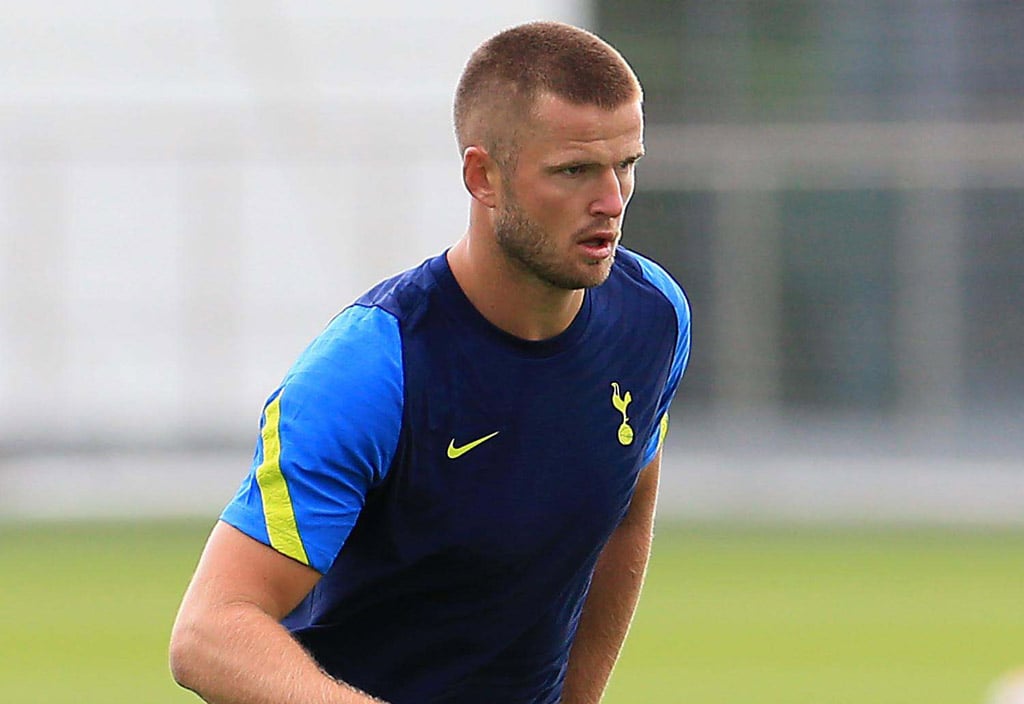On the 16th August 2014, a 20-year-old Eric Dier made his Premier League debut for Tottenham against London rivals West Ham. Signed earlier that summer from Sporting Lisbon, the England U21 international announced himself in dramatic fashion by scoring a 93rd-minute winner in a 1-0 victory at Upton Park.
“It all happened really quickly” he reflected on the goal afterwards – a quote that could equally be used to describe his progress for club and country in the following years.
The England manager at the time of Euro 2016, Roy Hodgson, talked of “a meteoric rise in the sense that he is suddenly a key figure for Tottenham and then to come in and play an important role for England is a big step for him.”
Initially brought in as a central defender, Dier’s versatility was evident in his first season.
Due to injuries and suspensions to Kyle Walker and Kyle Naughton, Dier played a large portion of games as a makeshift right back. It was only in the second half of the season that he established himself as the main centre back partner to Jan Vertonghen.
The arrival of Toby Alderweireld in the summer of 2015 prompted Mauricio Pochettino to play Dier as a holding midfield player for the 2015/16 season.
It was a system created with Dier in mind, Pochettino explaining how he “played as a midfielder without the ball, with the ball he was a third centre back.”
MORE SPURS STORIES
Dier was an integral part of the team that season, playing all but one Premier League game, as Spurs pushed title winners Leicester close before eventually finishing 3rd.
The defensive stats underlined the progress – 35 goals conceded, compared to 53 the previous season. Whilst the signing of Alderweireld undoubtedly made a huge difference, Dier’s role as the protector of the back four also played a significant part.
His ability to read the game, along with his technical ability and range of passing, resulted in consistent, stellar performances for his club. That form continued into Euro 2016, his excellent individual displays one of the very few positives in an otherwise disappointing England tournament.
The 2016/17 premier league season displayed further progress for Spurs who finished 2nd, ironically behind Antonio Conte’s Chelsea. Dier continued to play in holding midfield but injuries to Vertonghen and Toby Alderweireld meant that he played a large chunk of the season in the back three, as Spurs conceded a mere 26 goals.
Following a modest 2017/18 season by his recent standards, a series of injuries and illness in 2018/19 limited his playing time to just 20 Premier League appearances (transfermarkt.co.uk).
This seemed to carry over to the following season where a lack of form and confidence resulted in Dier’s career seemingly stalling. To be hyper critical, his lack of pace and athleticism was sometimes being exposed in central midfield, especially against the elite teams.
At this point, Jose Mourinho had come in but Dier’s form was still patchy. A decision was made between player and manager to play consistently as a centre back for the new season. Now deployed in a centre back pairing, Dier started the 2020/21 season positively.
After a 2-0 win over Arsenal on the 6th December 2020, Spurs were top of the table. In fact, since the calamitous 3-3 draw with West Ham in mid-October (which Dier missed due to injury), Spurs achieved five wins and a draw from their next six games, conceding just one goal – for context three of these games were against Manchester City, Chelsea and Arsenal.
Since then Spurs’ form dipped considerably, as did that of Dier. A number of mistakes in games culminated with him giving away a penalty for a rash challenge on Timo Werner in a 1-0 defeat to Chelsea.
This prompted Mourinho to claim that Dier was suffering a “crisis in confidence” and subsequently he spent eight of the remaining seventeen games that season on the bench (transfermarkt.co.uk).
He had now endured a turbulent few seasons and it felt as though the 2021/22 season was going to be make or break for his Spurs career.
So far, the signs are positive. This season Dier has started every Premier League game under both Nuno and Conte.
While he was showing consistency during Nuno’s reign, it is under the latter where he has rediscovered his best form. In the Italian’s first eight league games Dier has played as part of a back three and Spurs have conceded just four goals.
The foundations of Conte’s league titles with Juventus, Inter Milan and Chelsea were built on a back three, either as a 3-4-3 or 3-5-2. In his brief spell as Spurs manager so far, he seems to have favoured the 3-4-3 formation, with Dier occupying the central role.
As a player who is comfortable on the ball, has a good reading of the game and a decent range of passing, this appears to suit him, as it did under Pochettino in the 2016/17 season.
It also provides him with the additional protection of two extra defenders alongside him. There is less exposure to lapses in concentration or his relative lack of pace that may otherwise be capitalised on by teams if he were playing in a two-man defence.
In this respect, certain similarities can be drawn with David Luiz – technically excellent but occasionally error-prone – who benefitted from Conte’s tutelage and system during Chelsea’s title win in 2016/17.
Conte believes Dier has the potential to “become one of the best players in the world” at centre back.
His consistency this season is a good starting point. But now is the time for him to justify his manager’s comments by taking his game to the next level and fulfilling his potential.
Keep up to date with all the latest Tottenham news and opinion by following SpursWeb’s Facebook, Twitter and Instagram accounts.

